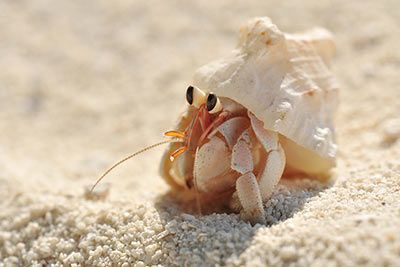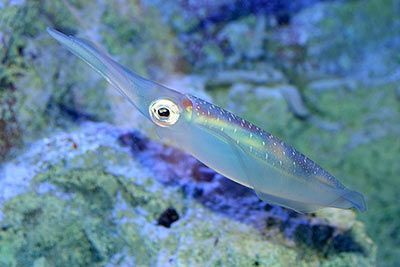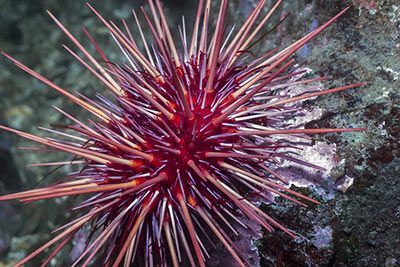Mantis Shrimp
Mantis Shrimp Facts
| Size | 1-12 in (3-30 cm) |
| Speed | Unknown |
| Weight | Unknown |
| Lifespan | Unknown |
| Food | Snails, shrimp, fish |
| Predators | Fishes, octopuses |
| Habitat | Tropical and subtropical oceans |
| Order | Mantis shrimp |
| Family | - |
| Scientific name | Stomatopoda |
| Characteristics | Can perceive ultraviolet light and infrared waves |
Main Characteristics
The mantis shrimp is a solitary crustacean living in tropical oceans and hunting for snails, shrimp, mollusks, oysters and fish on the ground of the sea. The name of the mantis shrimp indicates that its claws somehow resemble the forelegs of the praying mantis.
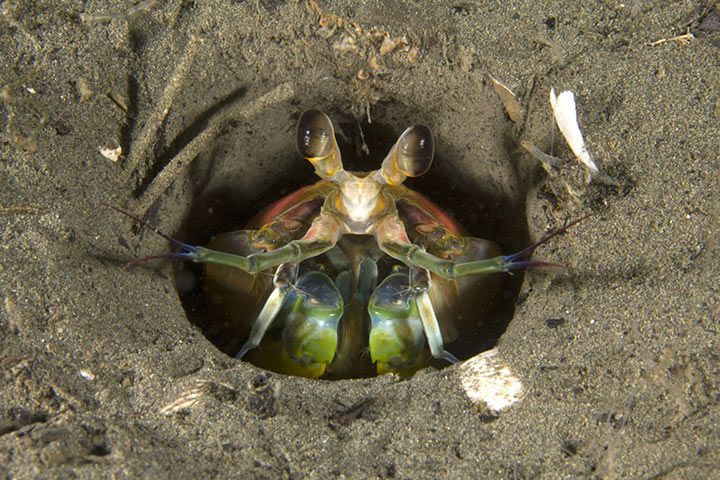
Behavior
What Do Mantis Shrimp Eat?
Mantis shrimp mainly feed on small snails, crabs and fish.
How Do Mantis Shrimp Hunt?
Mantis shrimp fling their hammer-like claws at their prey at 75 feet/second (23 meters/second). The impact is so strong that it can be compared to that of a pistol bullet. No other animal can move so quickly. Mantis shrimp are divided into two categories: the “smashers” that use their claws just like a hammer and the “spearers” that have spiny appendages with barbed tips.
Mantis Shrimp Shoot Air Bubbles
Little air bubbles form in the water when a mantis shrimp flings its claw forward. They implode with a loud noise and thus stun or injure the prey animal. It is said that they can even break the glass walls of fish tanks. The pistol shrimp uses a similar method, by the way.
Implode?
Under water, things do not explode but implode. Why? An explosion always implies a quick increase in volume, because the pressure inside is higher than the pressure of the surrounding air. Water exerts a higher pressure on objects than air, so that the forces inside cannot expand and the object collapses inward into itself.
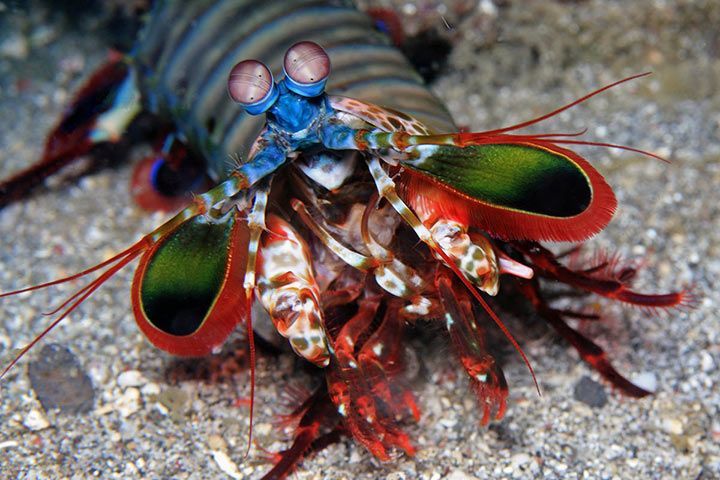
Senses and Abilities
Do Mantris Shrimp Have Hallucinations?
The world of the mantis shrimp is full of bright and shimmering colors. In addition to the colors we perceive, they are able to see ultraviolet colors, infrared waves and the polarization of the light. Even if you have got a very vivid imagination, you will never be able to get an idea of the vast amount of colors mantis shrimp are capable to perceive.
Mantis Shrimp See Polarized Light
Mantis shrimp, honey bees, water bugs, greater mouse-eared bats (a type of bat), cuttlefish, and desert ants can see polarized light. What exactly is it and of what use it for animals? "Normal" light consists of light waves that spread out in all directions from the point of origin. They oscillate linearly in a straight line or circularly. Polarized light waves only move in one direction. They can be linear OR circular OR elliptical (ovoid). The ability to see this light helps animals to perceive and orient themselves in their environment.
Polarized Light in Everyday Life?
You have certainly encountered polarized light in everyday life. It is used in particular for mobile phone, tablet and laptop displays, photo cameras (as a screw-on filter for the lens), in 3D films and for sunglasses for athletes, drivers and "glacier glasses". Polarized light has two advantages: 1. It increases the contrast and thus improves the readability of texts. 2. It reduces reflections and glare, which are very tiring for the eyes over a long period of time.
Enemies and Threats
How Do Mantis Shrimp Camouflage Themselves?
Mantis shrimp adapt to their surroundings. When moving about in green seaweed, they also change their color to green. On the sandy ground of the sea, they take on a light-brown color. The perfect camouflage!
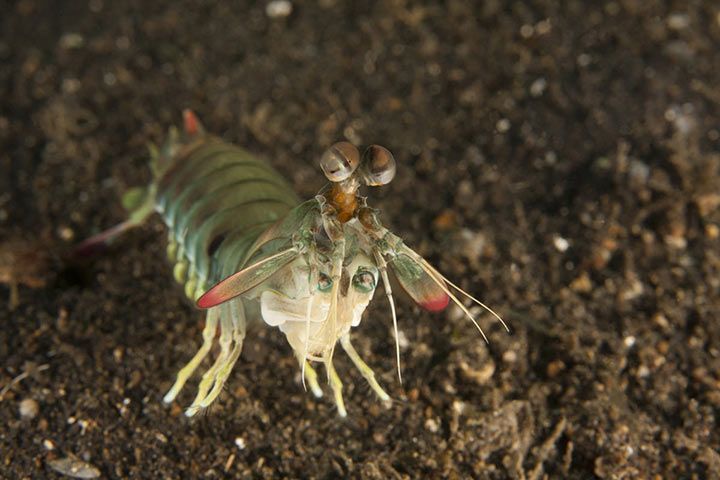
- Find Out More:
- Animals That Change Color
- Hermit Crab Facts
- Pistol Shrimp Facts
- Watch Now on animalfunfacts.net:
 All About Animal Senses
All About Animal Senses




